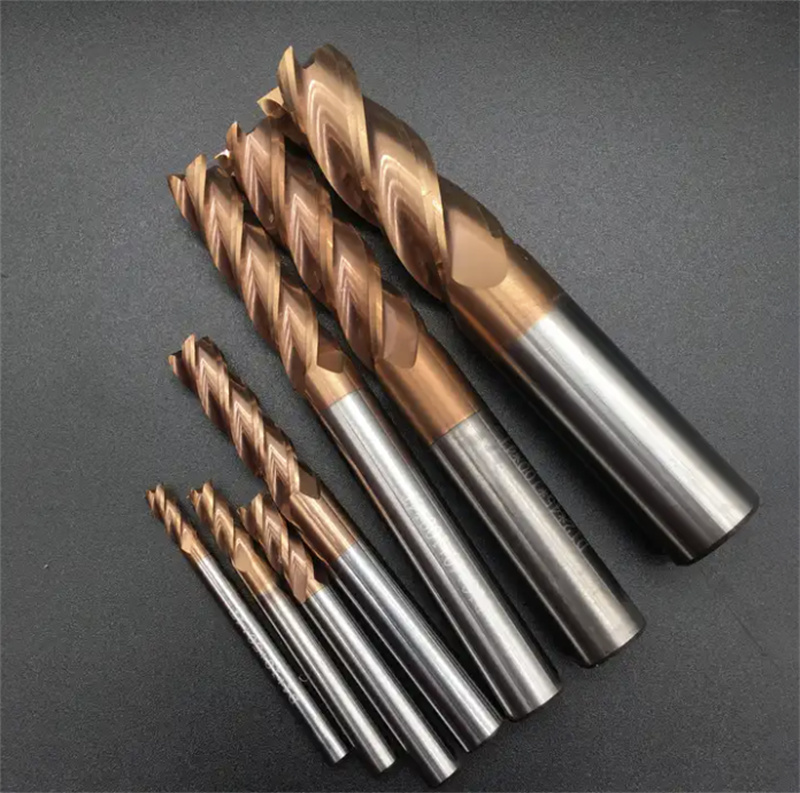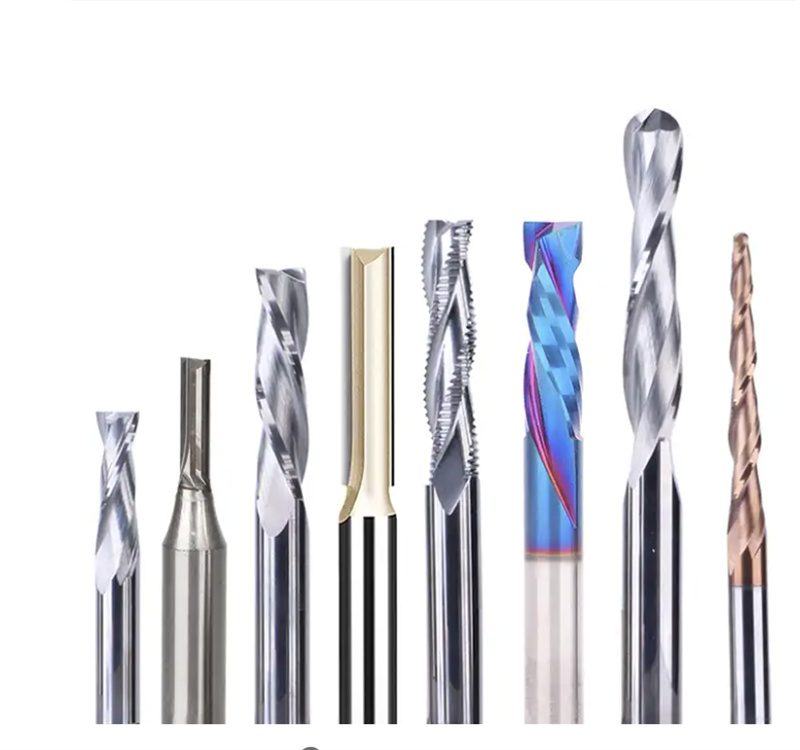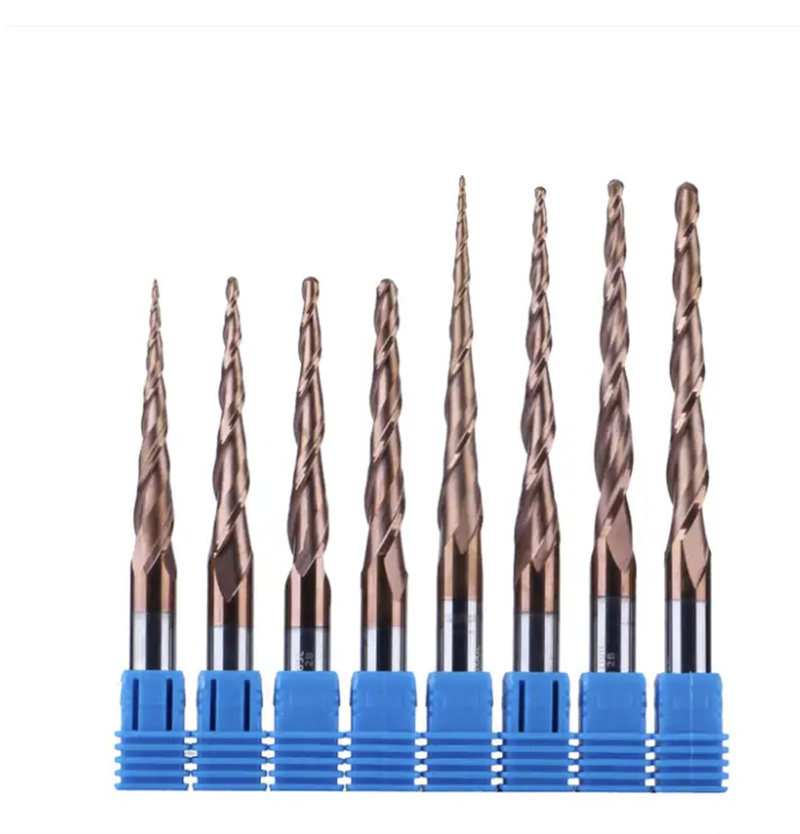Solid carbide end mills are essential cutting tools used in milling operations across various industries. This article provides a comprehensive description of the production steps involved in manufacturing solid carbide end mills, including raw material preparation, precision machining, coating, and explores the applications of commonly used types such as flat end mills, ball nose end mills, and corner radius end mills.
1)Raw Material Preparation: The production of solid carbide end mills begins with raw material preparation. Tungsten carbide powder of high quality is mixed with a binding agent, usually cobalt, in a ball mill. This mixture is then pressed and sintered at high temperatures, resulting in a solid carbide blank.
2)Precision Machining: After raw material preparation, the solid carbide blank undergoes precision machining. Utilizing a CNC milling machine, the blank is clamped, and the cutting edges are ground using diamond grinding wheels. This step ensures accurate dimensions and sharp cutting edges, enabling optimal performance.
3)Coating: To enhance the lifespan and cutting performance of solid carbide end mills, they are coated with various types of coatings. These coatings can improve hardness, reduce friction, and provide superior heat resistance. Common coating materials include titanium nitride (TiN), titanium carbonitride (TiCN), and aluminum titanium nitride (AlTiN). The coating process is typically conducted through physical vapor deposition (PVD) or chemical vapor deposition (CVD).
Applications of Solid Carbide End Mills:
Flat End Mills: Flat end mills feature a flat cutting surface and are extensively used for general milling operations. They are suitable for creating flat surfaces, square corners, and slots.
Ball Nose End Mills: Ball nose end mills have a rounded cutting edge, making them ideal for 3D contouring and sculpting surfaces. They are capable of producing smooth curves and intricate shapes, often employed in mold and die making, as well as industries requiring high precision and fine surface finish.
Corner Radius End Mills: Corner radius end mills possess a rounded corner enabling them to remove material in tight corners and fillets. They are suitable for machining curved surfaces, molds, and dies. The rounded corner reduces stress concentration and enhances tool life.
Conclusion: The production process of solid carbide end mills involves several steps, including raw material preparation, precision machining, and coating. These tools find applications in various industries, performing tasks such as creating flat surfaces, sculpting complex shapes, and machining rounded corners. Understanding the production process and applications of different types of solid carbide end mills is crucial for selecting the appropriate tool for specific milling operations.
Google Search Logic: When seeking further information on the production process and applications of solid carbide end mills, you can utilize keywords such as "solid carbide end mill manufacturing process," "precision machining of end mills," "end mill coating techniques," "applications of flat end mills," "uses of ball nose end mills," "corner radius end mill applications," etc. Ensure to refine your search based on the specific information you require.
Post time: Jul-21-2023








